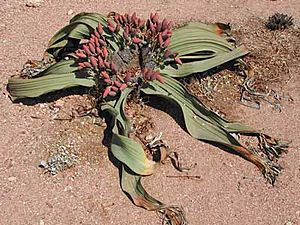Henry Harold Welch Pearson facts for kids
Quick facts for kids
Henry Harold Welch Pearson
|
|
|---|---|
 |
|
| Born | 28 January 1870 |
| Died | 3 November 1916 (aged 46) Wynberg, Cape Town
|
| Resting place | Kirstenbosch National Botanical Garden |
| Alma mater | Christ's College, Cambridge |
| Awards | Fellow of the Royal Society Fellow of the Linnean Society of London |
| Scientific career | |
| Fields | Botanist |
| Institutions | South African College |
| Author abbrev. (botany) | H.Pearson |
Henry Harold Welch Pearson (born January 28, 1870 – died November 3, 1916) was a botanist from South Africa, originally from Britain. He is best known for starting the famous Kirstenbosch National Botanical Garden in 1913.
Contents
Pearson's Early Life and Studies
Henry Pearson first worked as a chemist's helper. But a lecture about plants in 1892 changed his mind. He then studied plants and earned a scholarship to Cambridge University in 1896. He did very well in his science studies there.
After graduating, Pearson became an Assistant Curator at the Cambridge herbarium. A herbarium is like a library for dried plant samples. Here, he became very interested in taxonomy, which is the science of classifying living things. Later, he worked at the Royal Botanic Gardens in Kew, helping with plants from India.
Discovering Unique Plants
In 1903, Pearson became the first Professor of Botany at the South African College in Cape Town. He was very keen to study unique plants.
Studying the Welwitschia Plant
In 1904, Pearson went on an expedition to South West Africa (now Namibia). His goal was to study a very unusual plant called Welwitschia. This plant is special because it's the only one of its kind in its group. His first trip was cut short by a local conflict.
He tried again in 1907 with another botanist, E. E. Galpin. Pearson wrote important papers about Welwitschia, describing how it lives, its structure, and how it develops. These studies earned him a special science degree from Cambridge. He then went to Angola in 1909 to study a plant related to Welwitschia, called Gnetum.
Founding Kirstenbosch Garden
Living in Cape Town, Pearson saw how many amazing plants grew in the Cape Peninsula. He strongly believed that a special botanical garden was needed to protect and show off these plants.
In 1910, he gave an important speech to scientists in South Africa. He asked everyone to support the idea of creating a botanical garden. Because of his passion, the Botanical Society of South Africa was formed in 1912. This group worked to convince the Prime Minister, Louis Botha, to create the garden.
A powerful supporter, Sir Lionel Phillips, helped pass a law in 1913. A piece of land that Cecil Rhodes had given to the public was chosen. This is how the Kirstenbosch National Botanical Garden was created! Pearson was chosen as its very first director.
Pearson's Legacy
Henry Pearson passed away in 1916 and was buried at Kirstenbosch. His tombstone has a famous saying: "If ye seek his monument, look around" – meaning the garden itself is his lasting memorial.
He is remembered in the name of a plant group called Pearsonia, and several plant species are named after him. A special botany chair at the University of Cape Town is named the Harold Pearson Chair of Botany in his honor. The building where the Botany Department is located is also named the HW Pearson Building.
When botanists write about plants he discovered or named, they use the short name H.Pearson.
Honours and Achievements
- Bachelor of Arts (Cambridge) 1896
- Doctor of Science (DSc) 1907
- Fellow of the Royal Society 1916
- Fellow of the Linnean Society of London 1901
- Assistant Curator, Cambridge Herbarium 1898–99
- Assistant for India, Kew Herbarium 1899
- Professor of Botany, South African College in Cape Town 1903
- Director of Cape Botanical Gardens 1913
Images for kids



